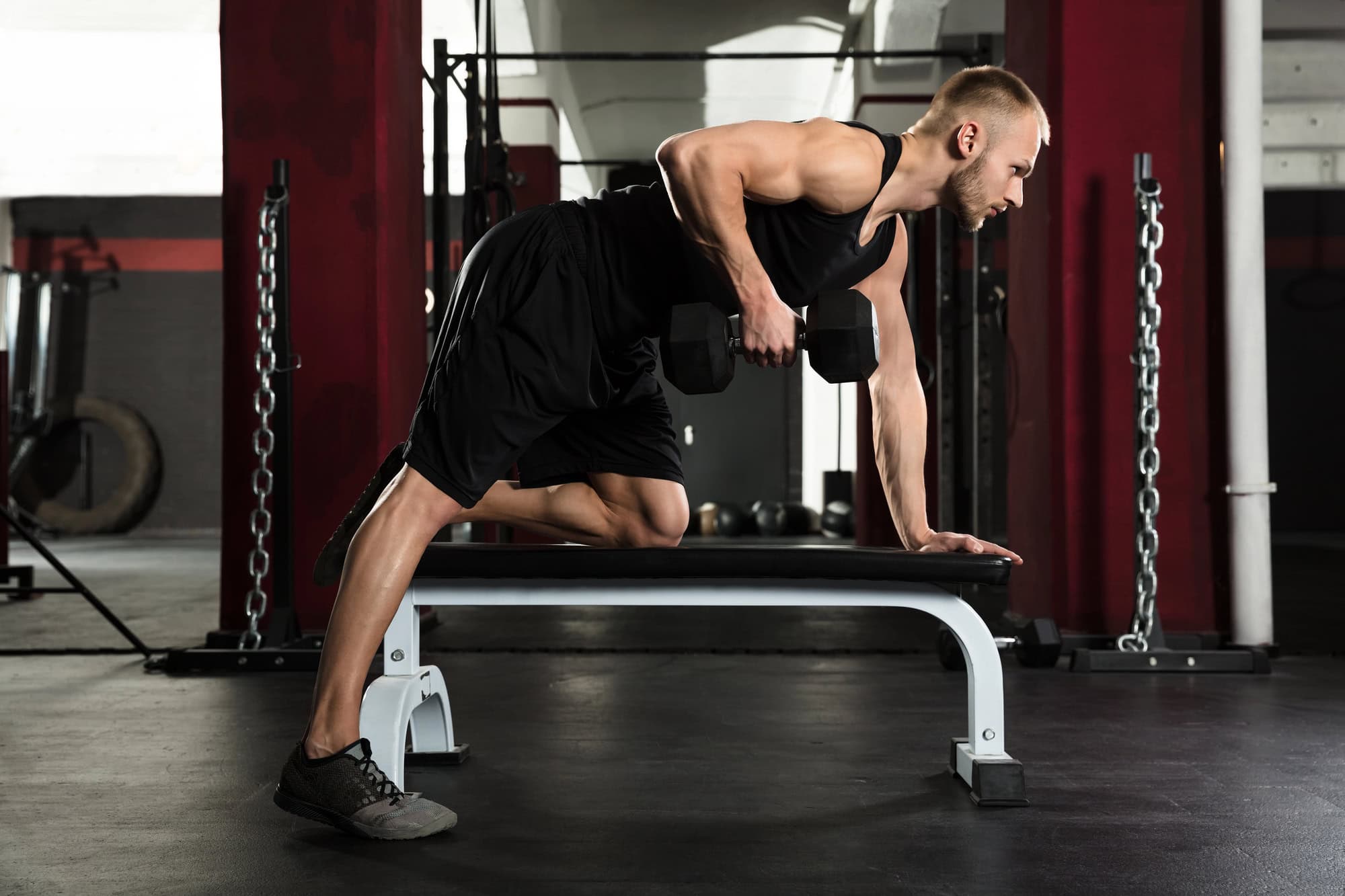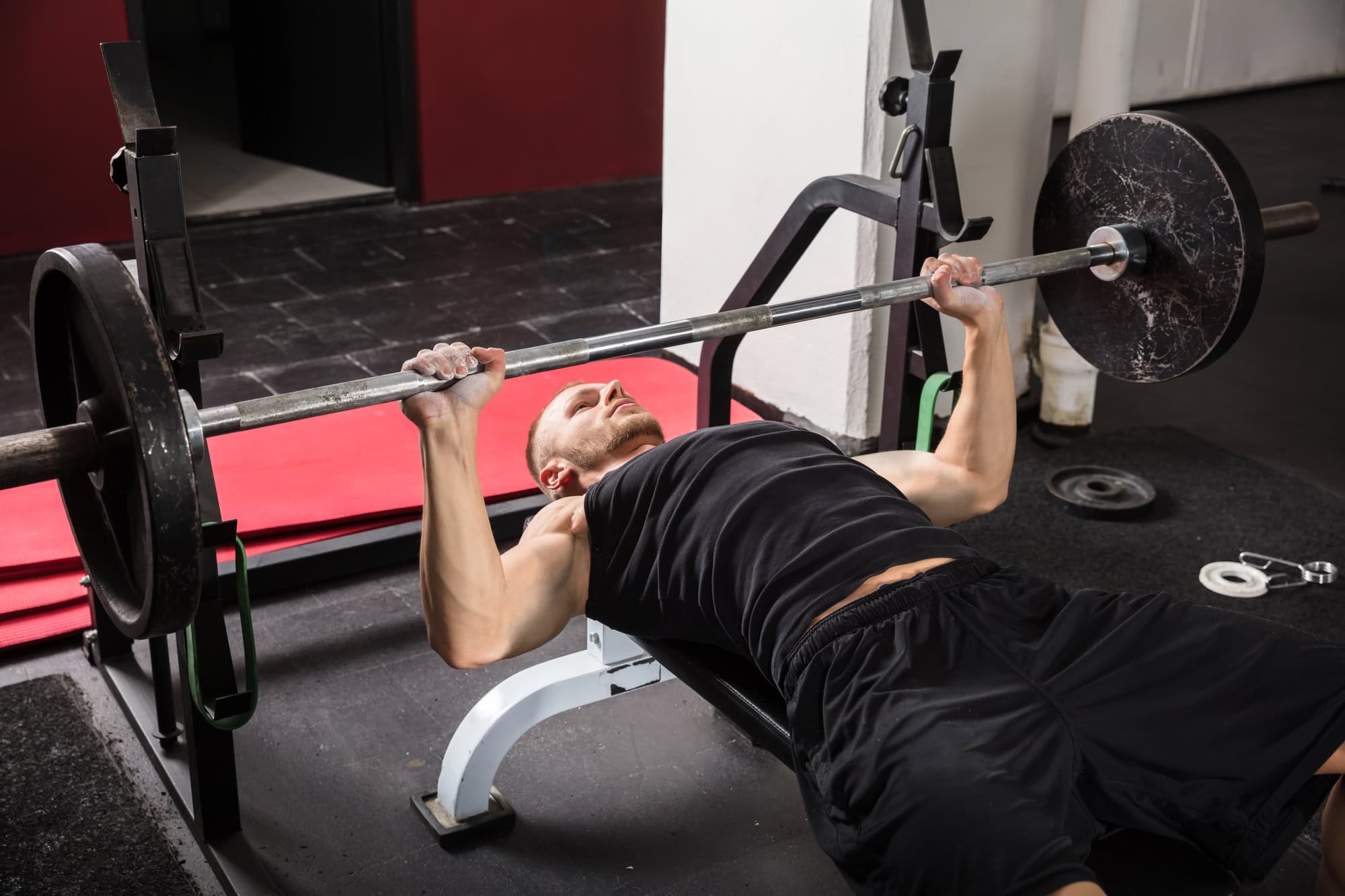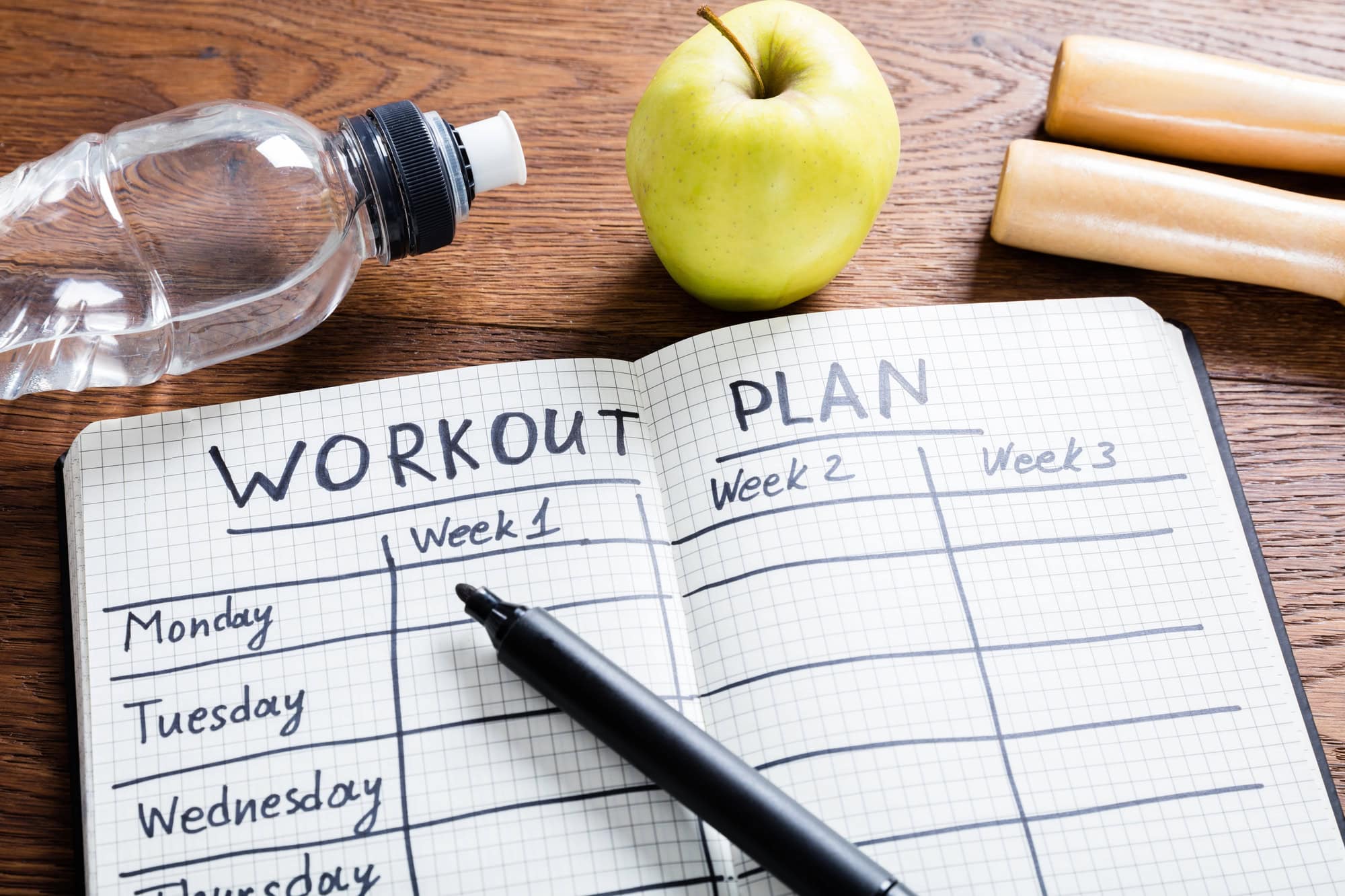Ever walk into the gym and wonder what on earth you should train today? Maybe you planned to do legs, but your friend swears by an upper-body day, and that influencer on Instagram is shouting about a “PPL split” (what even is that?). It’s confusing. You’re not alone if you’ve felt overwhelmed trying to decide how to structure your workouts. Should you do full-body sessions, alternate muscle groups, or hit one body part each day? We all want to get the most out of our workouts without basically living at the gym, but figuring out the right schedule can feel like solving a puzzle.
The good news: finding the perfect workout split doesn’t have to be rocket science. In this guide, we’ll break down what workout splits are, why they matter, and how to choose one that fits your life (whether you’re pumping iron at the gym or sweating it out at home). By the end, you’ll have a clear action plan to structure your routine for building muscle, losing fat, or just improving overall fitness – with an honest, supportive nudge in the right direction (and maybe a bit of wit). Let’s demystify those workout splits!
What Are Workout Splits (and Why Should You Care)?
“Workout splits” just means how you divide up your workouts during the week. Instead of training your whole body every session, you “split” your routine to focus on specific muscle groups or movement patterns each day. For example, you might train your upper body on Mondays and lower body on Tuesdays – that’s a simple workout split. Essentially, you’re organizing which muscles or exercises you do on which days. (1)
Why bother splitting workouts? The main reason is recovery and focus. When you target fewer muscle groups per session, you can give each area more attention (hello, arm day pump) and then let those muscles rest while you work others next time. Splits help you manage fatigue – so you’re not trying to crush heavy squats and an intense bench press in one go, which might leave one of those exercises suffering. As one fitness resource puts it, splitting up your training can allow you to train more days per week while maximizing recovery and exercise variety. In other words, workout splits help balance your training frequency and intensity so you get stronger and fitter without burning out.
To sum it up, workout splits matter because they let you prioritize different muscles on different days, ensuring each gets enough stimulus and rest. A good split schedule can prevent overtraining, reduce the “what do I do today?” anxiety, and make your routine more efficient for your goals. Whether you want to build serious muscle or just stay active most days, there’s likely a split that fits your needs.
Popular Workout Split Schedules (3-Day, 4-Day, 5-Day Plans)
Let’s get into the fun part: sample workout splits. There are countless ways to schedule your training, but we’ll cover three popular approaches – a 3-day, 4-day, and 5-day split. These examples will include both gym-friendly and home-friendly ideas, so you can adapt them whether you have a full weight set or just a pair of dumbbells (or even bodyweight).
Remember, these are just templates. Feel free to tweak exercises or days to match your situation. The goal is to find a structure that you can stick with consistently. Consistency beats perfection here – a decent plan you follow is better than a “perfect” plan collecting dust.
3-Day Workout Split (Flexible and Time-Saving)

Who it’s for: The 3-day split is perfect if you’re short on time or just getting started. It lets you train each major muscle group roughly once per week with a couple of compound movements per session. It’s also great for general fitness and maintaining muscle when you have a busy schedule. Many beginners and even seasoned lifters with tight schedules use a 3-day plan to make gains without practically living in the gym.
How it works: You’ll work out three times a week (say Monday, Wednesday, Friday), with each session focusing on different muscles. One popular way to do a 3-day split is the Push/Pull/Legs (PPL) rotation:
- Day 1 – Push: Exercises that involve pushing movements (chest, shoulders, triceps). For example, you might do a bench press or push-ups, overhead shoulder presses, and some triceps dips or pushdowns.
- Day 2 – Pull: Pulling movements (back, biceps). Example exercises: pull-ups or dumbbell rows for your back, bicep curls, and maybe some face pulls or back extensions.
- Day 3 – Legs: Lower body (quads, hamstrings, glutes, calves). Think squats or lunges, deadlifts or hamstring bridges, and calf raises.
Each workout hits multiple muscles, and across the three days you’ve covered your whole body. Importantly, you get rest days in between (e.g., Tuesday, Thursday, and the weekend off) to recover. Recovery is when your muscles actually rebuild stronger, so those off-days are gold.
Gym vs. Home: At the gym, a push day might include bench presses and cable pushdowns, whereas at home you could do push-ups, resistance band presses, and chair dips. Pull day at the gym could mean lat pulldowns and barbell rows; at home, you might use resistance bands for rows or do inverted bodyweight rows under a sturdy table, plus bicep curls with whatever weight you have. Leg day at the gym offers barbells for squats and machines for leg presses, but at home you can still crush legs with bodyweight squats, lunges, glute bridges, and single-leg Romanian deadlifts holding a backpack for weight. The key movements (push, pull, squat/leg) remain the same.
Why it works: The 3-day split is simple and effective. You won’t hit each muscle group as often as some higher-frequency plans, but you’ll make up for it by really focusing on big exercises each day. In fact, research suggests that training a muscle group twice per week can be more effective for growth than once per week, which is why many 3-day splits use compound lifts that indirectly work muscles multiple times. For example, a bench press on push day primarily hits chest but also involves shoulders and triceps, giving those muscles some extra love outside their “main” day. If you pour effort into the basics and keep progression going (adding a little weight or reps over time), a 3-day plan can yield serious results. Plus, it’s easier on your schedule – and your sanity – to commit to three days and actually recover well.
4-Day Workout Split (Upper/Lower or Push/Pull Balance)
Who it’s for: Got a bit more time or looking for a balanced approach? A 4-day workout split is a nice middle-ground. It’s popular among intermediate lifters or busy people who can squeeze in four sessions a week. With four days, you can hit each muscle group a bit more thoroughly or frequently without needing to be in the gym almost every day.
How it works: There are a few ways to do a 4-day split. Two of the most common are:
- Upper/Lower Split: You alternate upper-body and lower-body days. For example, Monday and Thursday might be upper body workouts, while Tuesday and Friday are lower body. This way you train everything twice a week. Each session you focus on either all your upper body muscles or all your lower body muscles.
- Push/Pull Split: Another style is dividing into two push days and two pull days (often with legs split between them). For instance, Day 1 could be Upper Body Push (chest, shoulders, triceps), Day 2 Lower Body Pull (hamstrings, glutes, some back), Day 3 Upper Body Pull (back, biceps), Day 4 Lower Body Push (quads, calves). This is a bit like an upper/lower variation that separates the type of movement.
There’s flexibility here. Some people do Push/Pull/Rest/Push/Pull/Rest cycling through four workouts over six days (still roughly four workouts a week). But let’s keep it simple with the Monday–Thursday 4-day example.
Example – Upper/Lower 4-Day Split:
- Day 1 – Upper Body: e.g., bench press, rows, shoulder presses, pull-ups, plus some arm work.
- Day 2 – Lower Body: e.g., squats, deadlifts or hip thrusts, leg curls, calf raises, maybe some core.
- Day 3 – Rest (you’ve earned it).
- Day 4 – Upper Body (again): similar to Day 1 but you can vary exercises (incline press instead of flat bench, etc.).
- Day 5 – Lower Body (again): similar to Day 2 with variations (front squat instead of back squat, etc.).
- Days 6 & 7 – Rest (or light active recovery like walking or stretching).
This upper/lower rotation hits everything twice a week. Because you only focus on upper or lower at a time, you can do a few more exercises for those muscle groups compared to a full-body session.
Gym vs. Home: In a gym, an upper day might include bench presses, lat pulldowns, overhead dumbbell presses, and cable rows. At home, you could do pike push-ups (for shoulders), resistance band rows, or pull-ups on a doorway bar, and push-ups for chest. Lower body at the gym might utilize a barbell for squats and deadlifts, whereas at home you could do goblet squats with a kettlebell (or heavy object), single-leg Romanian deadlifts (bodyweight or holding something for resistance), and high-rep bodyweight squats or jump squats for intensity. Both settings allow core work like planks or leg raises.
Why it works: A 4-day split offers a great balance of frequency and recovery. You’re training each major area twice per week, which tends to be excellent for strength and hypertrophy (muscle growth). You also have enough days to incorporate a bit more variety or isolation exercises (like bicep curls, tricep extensions, lateral shoulder raises) that you might skip on a 3-day plan due to time. Many people find four days per week is manageable – you have workouts often enough to stay in the groove, but also enough rest days to not feel overwhelmed. Just be careful: if you go very intense on all four days without adequate sleep and nutrition, you might need an extra rest day. Listen to your body. If you start a 4-day split and feel wiped out, remember you can always spread it out (e.g., Mon/Tue/Thu/Fri training, or take Wednesday and the weekend off). Flexibility is key.
5-Day Workout Split (Body Part Focus for Muscle Growth)

Who it’s for: The 5-day split is typically for the enthusiasts and advanced trainees, especially those focused on building muscle (hypertrophy) or fine-tuning their physique. It’s a staple in bodybuilding routines: you have a dedicated day for each major muscle group (or combined small groups). If you love weight training and can commit to five days a week, this approach lets you really home in on each area. Just be cautious if you’re new – jumping into a 5-day schedule can be a shock if your body isn’t used to that volume.
How it works: Most 5-day splits are body-part splits, meaning each day you train one or two muscle groups with lots of volume. A classic example:
- Day 1 – Chest: All chest exercises (bench variations, flyes, push-ups) and maybe a bit of triceps since they assist in pressing.
- Day 2 – Back: Focus on back exercises (rows, pull-ups, pulldowns) and perhaps some bicep work since curls fit well here.
- Day 3 – Legs: Hit all major lower-body muscles (squats, lunges, deadlifts or bridges, calf raises).
- Day 4 – Shoulders: Overhead presses, lateral raises, rear delt flyes – all about the shoulders. Abs can be added here too.
- Day 5 – Arms: A dedicated arms day to blast biceps and triceps (curls, hammer curls, triceps extensions, dips). Alternatively, some prefer Day 5 as an extra leg or glute day; there’s flexibility based on your priority.
Days 6 and 7 are rest (or one rest day and one active recovery/cardio day). You can shuffle the order (many start the week with legs when energy is high, or put a rest day mid-week). The idea is each muscle group gets its own “spotlight” day.
Gym vs. Home: In a gym, a chest day might involve four different chest exercises using machines and weights (bench press, incline dumbbells, cable crossovers, push-ups). At home, you might be more limited but you can still adjust – e.g., do push-ups (regular, incline, decline), bench press if you have a bar or dumbbells, or even resistance band flyes anchored on a door. Back day at the gym can use a pull-up bar, rowing machine, dumbbells for rows; at home, you rely on pull-ups/chin-ups, resistance bands, and maybe loaded backpacks for rowing movements. The key is volume: multiple exercises targeting the same muscle. This can be done with just bodyweight too (it’s tough but try multiple push-up variations for chest, or various squat and bridge variations for legs – you’ll feel it!). That said, having some equipment or weights definitely helps maximize a 5-day split, since isolation moves (like curls or lateral raises) usually require some form of resistance tool. (2)
Why it works (and potential pitfalls): A 5-day split maximizes focus on each muscle group. Because you’re dedicating an entire session to one area, you can do a variety of exercises and really fatigue the muscle from different angles. This is great for muscle growth; in fact, some research suggests splitting up your routine into many days can stimulate muscle protein synthesis effectively when paired with good nutrition and rest (basically priming your muscles to grow) – one study noted that a higher-frequency split routine led to significant hypertrophy gains when total work was high and recovery was adequate. On the flip side, the potential downside is fatigue or missed days. If you’re going hard five days a week, you need to eat and sleep like it’s your job to recover. Also, if you skip one of the five days, you’ve now completely missed a muscle group for the week (since each day is unique). Life happens – if you travel or get sick and miss “back day,” that muscle has to wait. For that reason, some folks cycle in an extra rest day if needed or double up small muscles if they miss a session.
In short, the 5-day split can yield awesome results for muscle building, but it demands commitment. It’s like having an almost-daily gym appointment with yourself. Make sure you genuinely enjoy that style of training and can keep up with recovery. If done correctly, though, it’s incredibly rewarding to see each muscle group grow and strengthen from the dedicated attention.
(Quick note: There are also 6-day splits (often push/pull/legs repeated twice per week) and other variations. Those can work for advanced athletes, but for most people, 3–5 days does the job. Don’t assume more days = better by default. Quality and consistency beat sheer quantity.)
Matching Your Workout Split to Your Goals
Now that we’ve covered the main schedules, how do you choose the right workout split for you? It largely boils down to your personal goals, experience, and lifestyle. Let’s look at how different splits align with common goals:
Goal: Building Muscle (Hypertrophy)
If your primary goal is to build muscle size and strength, you’ll want a split that provides enough volume for each muscle group and hits each muscle at least twice a week if possible (since evidence points to better hypertrophy when muscles are trained two times weekly vs. one time). Beginners can build muscle with a simple 3-day full-body routine or 3-day push/pull/legs because virtually any stimulus is new and effective. In fact, a full-body routine done three times a week might be ideal initially – you practice big lifts frequently and train each muscle often.
As you get more advanced, adding days or focusing your split can help. An upper/lower 4-day split or push/pull/legs 5-day split is common for intermediate muscle-building. These allow for more exercises per muscle (for that extra pump and detailed work) and sufficient recovery. For pure hypertrophy nerds (we say that lovingly), the 5-day body-part split is a go-to because it blasts each muscle with high volume. One study even found that a traditional bodybuilding-style split (one muscle group per day) was very effective for muscle growth, while a full-body routine was better for strength. So if you’re chasing size, a well-planned split can give you an edge by structuring enough volume and rest.
Tips if muscle gain is your goal:
- Ensure progressive overload (adding weight or reps over time) in your routine, regardless of split.
- Don’t neglect rest days – muscles grow when you rest, not during the workout. A split simply organizes that process.
- Eat enough protein and calories to support muscle repair.
- If you’re advanced and hitting a plateau, consider tweaking your split (e.g., moving from 3 days to 4 days, or 4 to 5) to change the stimulus.
Goal: Losing Fat (Weight Loss and Conditioning)

For fat loss, the key is burning calories while preserving muscle. Any split can technically work for weight loss as long as you’re consistent and pairing it with a good diet. However, here are some considerations:
- Frequency: You might lean towards a higher-frequency split (4 or 5 days) simply to increase activity levels throughout the week. More workout days can mean more total calories burned. That said, if you only have 3 days, you can still lose fat – just keep the intensity up and maybe add cardio on off days.
- Full-Body vs. Split: Some people prefer full-body workouts for fat loss because they engage many muscles and can be metabolically demanding (think sweating buckets). A 3-day full-body or 4-day upper/lower can be great for this. On the other hand, a 5-day body-part split can be combined with short cardio sessions to create a high-calorie burn week.
- At Home vs. Gym: If you’re working out at home to lose fat, you might incorporate circuits or supersets in your split to keep your heart rate up. For example, an upper-body day could alternate push-ups and pull-ups with minimal rest to get a cardio effect too. In the gym, you could end lift sessions with a quick finisher (like kettlebell swings or sled pushes).
The bottom line for fat loss is choose a split that you enjoy and can stick to. Consistency will trump any specific magic split. You may also mix in cardio days or active rest (like long walks, cycling, etc.) alongside your split. For instance, a nice weekly schedule might be 3 days of a strength-training split + 2 days of cardio or conditioning classes. This isn’t a strict “workout split” formula, but it shows you can integrate splits into a broader fat-loss plan.
Tips if fat loss is your goal:
- Prioritize compound exercises in your split (they burn more calories and work more muscle). For example, a leg day with squats, lunges, and step-ups will torch more calories than a leg day of just leg extensions and curls.
- Keep rest periods moderate to slightly short (e.g. 30-60 seconds) to maintain a higher heart rate, but not so short that you compromise lifting form.
- Stay active on rest days (light cardio, walking). With a split routine, “rest” doesn’t have to mean couch potato all day – some movement aids recovery and burns a few extra calories.
- Ensure you’re in a calorie deficit through diet for fat loss; the workout split helps shape your body and keep muscle, but diet does the heavy lifting for weight loss.
Goal: Improving General Fitness (Strength, Health, and Habits)
Maybe you’re not chasing big biceps or a six-pack specifically – you just want to be healthy, get stronger, and feel good. In this case, the best workout split is one that fits your life and keeps you exercising regularly. A consistent routine will improve your strength, endurance, and overall fitness over time, even if it’s not hardcore bodybuilding.
For many, a 3-day full-body split is fantastic for general fitness. You work all major muscle groups each session with a few exercises (say, a push, a pull, a leg, and a core move every workout). This keeps things simple and balanced. You could also do a 4-day upper/lower if you enjoy being in the gym more often, which gives a bit more focus each day but still repeats muscle groups each week.
General fitness also means you might mix in other activities. If you like classes, sports, or yoga, factor those in. For example, you might do strength workouts Monday/Wednesday/Friday and go to a spin class or play pickup basketball on Saturday. In that scenario, a 3-day strength split complements your lifestyle well.
At home vs. Gym: Either is fine for general fitness. At home, you might lean toward full-body workouts using bodyweight and some dumbbells. In the gym, you have more options but you can still keep it straightforward. Remember, the goal is not to punish yourself but to create a sustainable habit. If a push/pull/legs rotation feels enjoyable, do that. If you prefer shorter full-body workouts, do that.
Tips for general fitness:
- Emphasize form and variety. Because you’re aiming for well-rounded fitness, include exercises that cover strength, mobility, and maybe balance. A split could incorporate, say, squats and planks one day, push-ups and lunges another, etc.
- Don’t worry about the “optimal” split too much. Consistency and enjoyment are far more important at this stage. As long as you hit each major muscle group at least once a week and stay active, you’re doing great.
- Feel free to switch it up occasionally. If you’ve been doing a 3-day split for months and getting bored, try a month of an upper/lower 4-day split, or vice versa. The change can keep you mentally fresh and challenge your body in new ways (just don’t switch so often that you never progress – stick to a plan for a reasonable time to reap benefits).
Putting It All Together: Choosing Your Workout Split
By now you’ve seen there’s no one-size-fits-all answer. The “best” workout split is the one that aligns with your goalsand that you can stick with consistently. Here’s a simple action plan to choose and implement your workout split:
- Define Your Goal: First, be clear on what you want. Is it building muscle? Shedding a few pounds of fat? Getting stronger or more athletic? Your goal will guide your choice. (If you have multiple goals, prioritize what’s most important right now – you can shift focus later or combine goals intelligently.)
- Assess Your Schedule Realistically: How many days per week can you commit to working out? Be honest with yourself. It’s better to start with fewer days and actually hit them than to plan for six days and miss half of them. If you’re super busy, a 3-day split is a winner. If you have a bit more time and love working out, try 4 or 5 days. Remember, consistency over time beats a short-lived burst of ambition.
- Choose a Split Type: Based on the above, pick a structure.
- Busy beginner or balanced routine needed? Try a 3-day full-body or push/pull/legs split.
- Ready for more frequency? Go for an upper/lower 4-day split or another 4-day variant.
- Experienced and craving volume? A 5-day body-part split could be your jam (just monitor your recovery).
- At home with limited equipment? Perhaps lean toward full-body or upper/lower splits where bodyweight and simple moves can go a long way. In contrast, gym access opens up any split.
- Plan Your Exercises: Jot down the exercises you’ll do on each day. Keep it basic: each day of the split, pick 4–6 exercises. Compound movements (multi-joint lifts like squats, presses, rows) should be the core. Add isolation exercises (curls, calf raises, etc.) as needed, especially in 4- or 5-day splits. If unsure, start with a couple of exercises per muscle group. You can always adjust later.
- Listen to Your Body and Adjust: Follow your chosen split for at least 4–6 weeks and see how you feel. Are you recovering well, or are you too sore and fatigued? If the latter, you might need to scale back intensity or add an extra rest day in the cycle. On the flip side, if you feel like it’s too easy or you have extra time/energy, you can add a bit more volume or another training day. This process is all about finding the sweet spot for you. There’s nothing wrong with tweaking the split – it’s your routine, after all.
- Stay Consistent (But Keep It Fun): The magic happens when you follow your program week in and week out. But “following” doesn’t mean rigidly doing the exact same exercises forever. Small changes like swapping an exercise, increasing weight, or trying a new variation can keep things interesting. Just don’t change the overall split every other day. Stick with the plan, give it a chance to work, and enjoy the progress. If you miss a workout, no guilt – just get back on track as soon as you can.
Practical takeaway: choosing a workout split is a bit like picking the right tool for a job – you want the one that fits your needs and you’ll actually use. The honest truth from coach-to-client: the best workout split is the one you’ll do consistently. A mediocre plan done with heart beats a “perfect” plan done half-heartedly. So use the info in this guide to pick a path, but remember you’re allowed to personalize it. Fitness is a lifelong journey, and your workout split can evolve as you do.
Now you’re armed with knowledge and an action plan. No more wandering into the gym aimlessly or skipping workouts because you’re unsure what to do. Whether you’re a Cardio Panda Club Member doing home workouts or a gym warrior hitting the weights, you have the tools to structure your week in a way that makes sense. So, go ahead – pick a split, put it into practice, and watch those results roll in. Consistency, patience, and smart planning are your secret weapons. You’ve got this!



